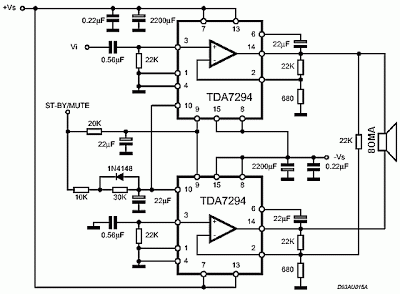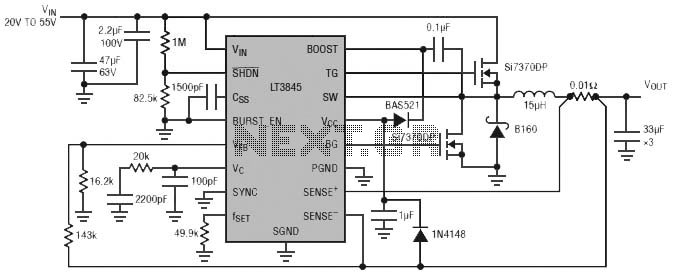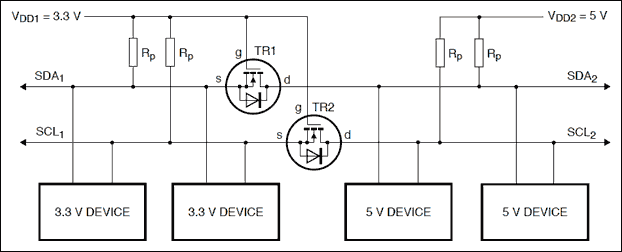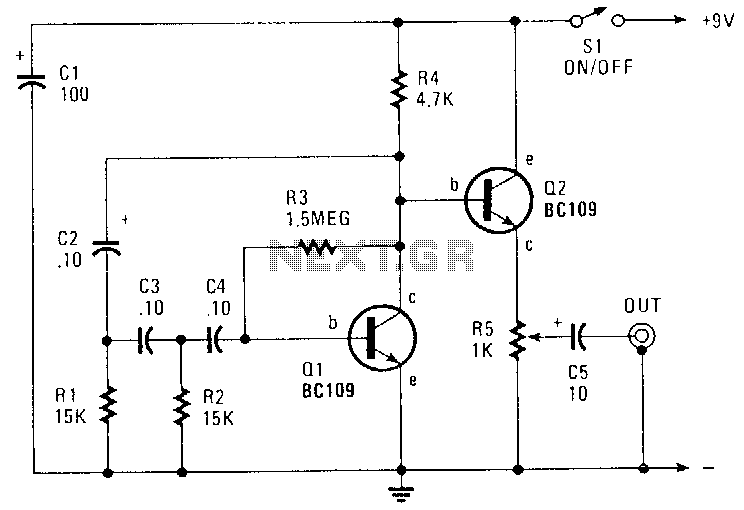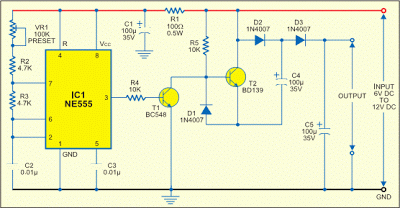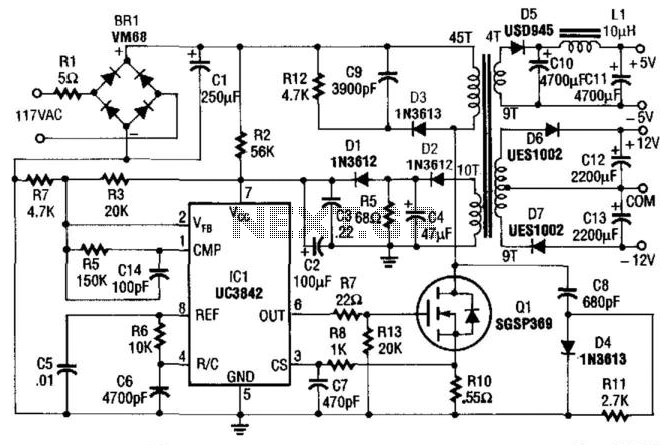
three level audio power indicator
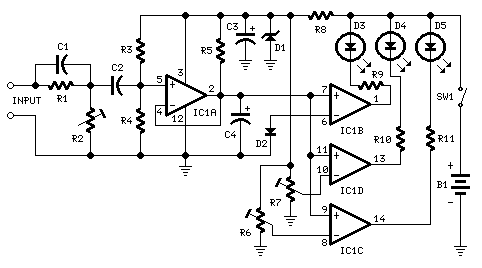
This circuit is designed to indicate the power output level of any audio amplifier. It is simple, portable, and displays three power levels that can be adjusted to any desired value.
The circuit operates by measuring the output voltage from the audio amplifier and converting this voltage into a corresponding power level indication. The design incorporates a voltage divider and a microcontroller or an analog display system to process the voltage levels.
To initiate the operation, the output signal from the amplifier is fed into a voltage divider network, which scales the voltage to a manageable level suitable for processing. This is crucial as the output voltage of audio amplifiers can exceed the input limits of most electronic components.
The microcontroller is programmed to interpret the scaled voltage levels and compare them against predefined thresholds that represent the three power levels. These thresholds can be set according to the specific requirements of the application, allowing for customization based on the amplifier's output characteristics.
Once the voltage is measured and processed, the microcontroller activates the corresponding indicator, which could be LEDs or an analog meter, to visually represent the power output. The use of three distinct levels allows users to quickly ascertain whether the amplifier is operating within the desired range, providing a straightforward visual cue that can enhance usability during operation.
This circuit is particularly beneficial in settings where audio performance is critical, such as live sound environments or studio applications, enabling users to monitor their equipment effectively and make necessary adjustments in real-time. The portable nature of the design makes it suitable for both stationary and mobile setups, ensuring versatility in various audio applications.This circuit is intended to indicate the power output level of any audio amplifier. It is simple, portable, and displays three power levels that can be set to any desired value.. 🔗 External reference
The circuit operates by measuring the output voltage from the audio amplifier and converting this voltage into a corresponding power level indication. The design incorporates a voltage divider and a microcontroller or an analog display system to process the voltage levels.
To initiate the operation, the output signal from the amplifier is fed into a voltage divider network, which scales the voltage to a manageable level suitable for processing. This is crucial as the output voltage of audio amplifiers can exceed the input limits of most electronic components.
The microcontroller is programmed to interpret the scaled voltage levels and compare them against predefined thresholds that represent the three power levels. These thresholds can be set according to the specific requirements of the application, allowing for customization based on the amplifier's output characteristics.
Once the voltage is measured and processed, the microcontroller activates the corresponding indicator, which could be LEDs or an analog meter, to visually represent the power output. The use of three distinct levels allows users to quickly ascertain whether the amplifier is operating within the desired range, providing a straightforward visual cue that can enhance usability during operation.
This circuit is particularly beneficial in settings where audio performance is critical, such as live sound environments or studio applications, enabling users to monitor their equipment effectively and make necessary adjustments in real-time. The portable nature of the design makes it suitable for both stationary and mobile setups, ensuring versatility in various audio applications.This circuit is intended to indicate the power output level of any audio amplifier. It is simple, portable, and displays three power levels that can be set to any desired value.. 🔗 External reference
